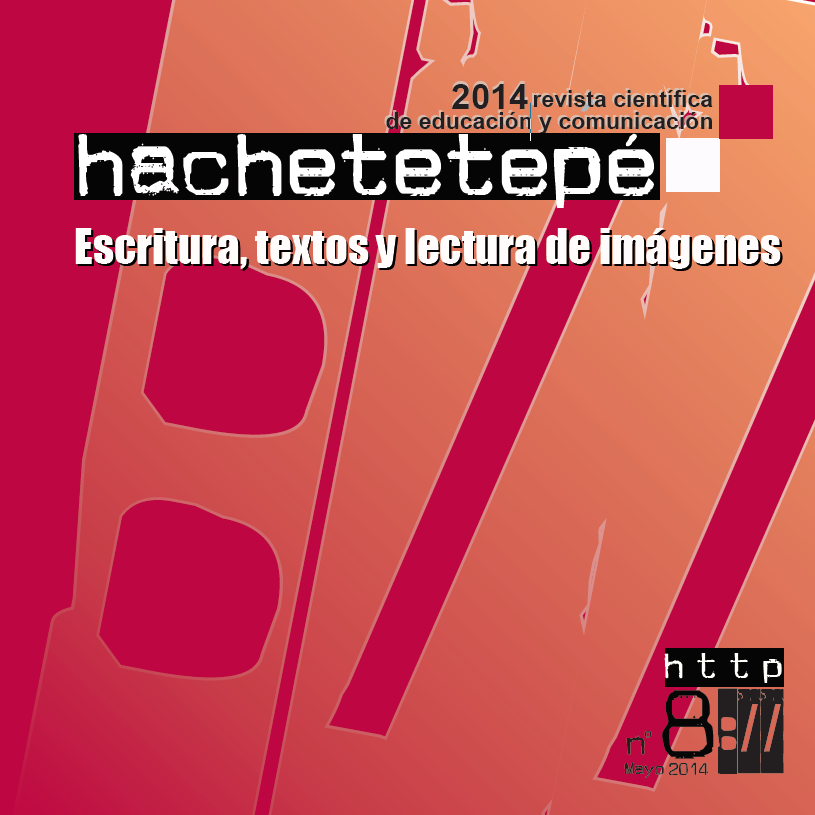Reflections on the potential of YouTube for teaching and learning a Foreign Language
Abstract
We are part of the society which we are living in. Undoubtedly, it is changing. The results are that ways of communication, attitudes, interaction relationships, daily manners are changing nowadays. Thus, the profile of students are also changing. Students, nowadays, are exposed to electronic devices most of the time, since they are closely related, they are part of their lives. By taking advantage of this interaction, it is thought that the inclusion of electronic devices and a different methodology could improve student's learning process, since it may act as a motivating aspect along the process. Thus, we provide some reflections on the presence and usefulness of the resources on YouTube along the teaching/learning process of a Foreign Language, as well as other tools, channels and websites created with educational purposes following YouTube's steps.
Keywords
Downloads
How to Cite
License

This work is licensed under a Creative Commons Attribution-NonCommercial-NoDerivatives 4.0 International License.
Those authors who have published with this journal, accept the following terms:
- They will retain their copyright and guarantee the journal the right to first publication of their work, which will simultaneously be subject to the Creative Commons Attribution License . They may be copied, used, disseminated, transmitted and publicly displayed, provided that the authorship, url, and magazine are cited, and are not used for commercial purposes. No derivative works are allowed.
- They may adopt other non-exclusive license agreements for the distribution of the published version of the work (e.g., deposit it in an institutional telematic archive or publish it in a monographic volume) provided that the initial publication in this journal is indicated.
- Disseminate your work through the Internet (e.g., in institutional telematic archives or on your website) once the manuscript is accepted, which may lead to interesting exchanges and increased citations of the published work. (See The effect of open access).
Hachetetepé. Scientific journal of education and communication does not charge a fee for the submission of manuscripts or for the publication of its articles.
References
Area Moreira, M. (2009). “El proceso de integración y uso pedagógico de las TIC en los centros educativos. Un estudio de casos”. En Revista de educación, 352; 77-97.
Area Moreira, M. y otros (2012). Alfabetización digital y competencias informacionales. Madrid: Fundación telefónica.
Callejo, Mª L. y González, Mª E. (2004). Las TIC, un reto para nuevos aprendizajes: Aprender a usar información, a comunicar y a usar recursos. Madrid: Narcea.
Colás, P.; González, T. y de Pablos, J. (2013). “Juventud y redes sociales: Motivaciones y usos preferentes”. En Comunicar, Revista Científica de Educomunicación, 40; 5-23.
Cassany, D. (2012). En línea. Leer y escribir en la red. Barcelona: Anagrama.
Domingo, M. y Marquès, P. (2011). “Aulas 2.0 y uso de las TIC en la práctica docente”. En Comunicar, Revista Científica de Educomunicación. 37; 169-175.
Erstad, O.; Gilje, Ø.; Arnseth, H.C. (2013). “Vidas de aprendizaje conectadas: Jóvenes digitales en espacios escolares y comunitario”. En Comunicar, Revista Científica de Educomunicación, 40; 89-98.
Esteve, J.M. (2003). La tercera revoluvión educativa: La educación en la sociedad del conocimiento. Barcelona: Paidós.
Ghaedshafari, M. y Bagheri, M.S. (2012). “Effects of Audiovisual, Audio and Visual Presentations on EFL Learner's Writing Skill”. En International Journal of English Lingüistics;. 113-121. Shiraz Azad University, Iran.
Krashen, S. D. (1988). Second Language Acquisition and Second Language Learning. Prentice-Hall International.
Mier, C. & Porto-Renó, D. (2009). “Blogosfera y YouTube como espacios para la exhibición de productos audiovisuales interactivos”. En Palabra-Clave, 2; 207-2014.
Muros, B.; Aragón, Y. y Bustos, A. (2013). “La ocupación del tiempo libre de jóvenes en el uso de videojuegos y redes”. En Comunicar, Revista Científica de Educomunicación, 40. 31-
O'Reilly, T. (2004). "What Is Web 2.0". O'Reilly Network.
Ramírez, E.; Cañedo, I. y Clemente, M. (2012). “Las actitudes y creencias de los profesores de secundaria sobre el uso de Internet en sus clases”. En Comunicar, Revista Científica de Educomunicación, 38; 147-155.
Simonsen, T.M. (2012). “Categorising YouTube”. MedieKultur;. 72-93.University of Aalborg, Denmark.
Solomon, G., & Schrum, L. (2007). Web 2.0: New tools, new schools. Washington, D.C.: International Society for Technology in Education.
Tan, E. & Pearce, N. (2011). “Open education videos in the classroom: exploring the oportunities and barriers to the use of YouTube in teaching introductory sociology”. En
Procedimientos de la Conferencia ALT-C 2011; 125-133. Graduate School / Learning Technologies Team, Durham University, Durham, UK.
Terantino, J.M. (2011). “Emerging Technologies: YouTube for foreign languages: you have to see this video”. En Language Learning & Technology, Vol. 15 (1); 10-16.
Vedantham, A. y Hassen, M. (2011). “New Media: Engaging and Educating the YouTube Generation”. En Journal of Learning Spaces, Vol. 1(1).
Yee, K. (2010). “YouTube and Video Quizzes”. En Turkish Online Journal of Distance Education-TOJDE, Vol 11 (2); 9-12.
Yubero, J.M. (2010). “Herramientas multimedia en la enseñanza de lenguas extranjeras: un recurso motivador”. II Congrés Internacional de Didactiques; 1-6.
Yumi Shuda, R. y Gater, W. (2007). “I Tune, You Tube, We Rule”. En CAP Journal, 1; 30-31.






